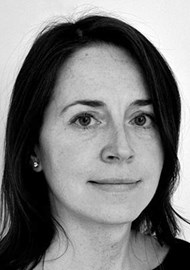
Joanne Rimmer,
MBBS, MA(Hons)Cantab, FRCS(ORL‑HNS),
Consultant Otolaryngologist / Rhinologist,
Monash Health,
Melbourne, Australia.
Rhinoplasty may be done purely for aesthetic reasons, as an essential part of a functional septorhinoplasty, or for a combination of both cosmetic and functional issues. Patient concerns may relate to a congenital deformity, post-traumatic change or be post-surgical. Whatever the reason, rhinoplasty remains a challenging procedure that exemplifies the problem with both function and form that we see in our specialty.
For July/August, we learn about the emerging technique of non-surgical rhinoplasty, as Lydia Badia explains what can and cannot be achieved with different injectables. Charles East explains why and how the whole concept of rhinoplasty is changing from the classical teaching of open structured rhinoplasty to a more conservative preservation approach, using different techniques and instrumentation to achieve this. Getting the nasal tip right is key, yet it remains one of the most difficult things to reliably achieve. George Marcells describes his approach to this challenging aspect of rhinoplasty surgery.
The cleft nose is one of the most complex congenital/developmental nasal deformities, from both aesthetic and functional points of view. Tony Holmes gives us the benefit of his 40 years of craniofacial surgical experience, with a thorough overview of the anatomical abnormalities associated with cleft lip and palate deformities, and the techniques that can be used to correct them.
Whether you are a trainee or an experienced rhinoplasty surgeon, these topics will hopefully give you something to think about and new techniques to consider.




